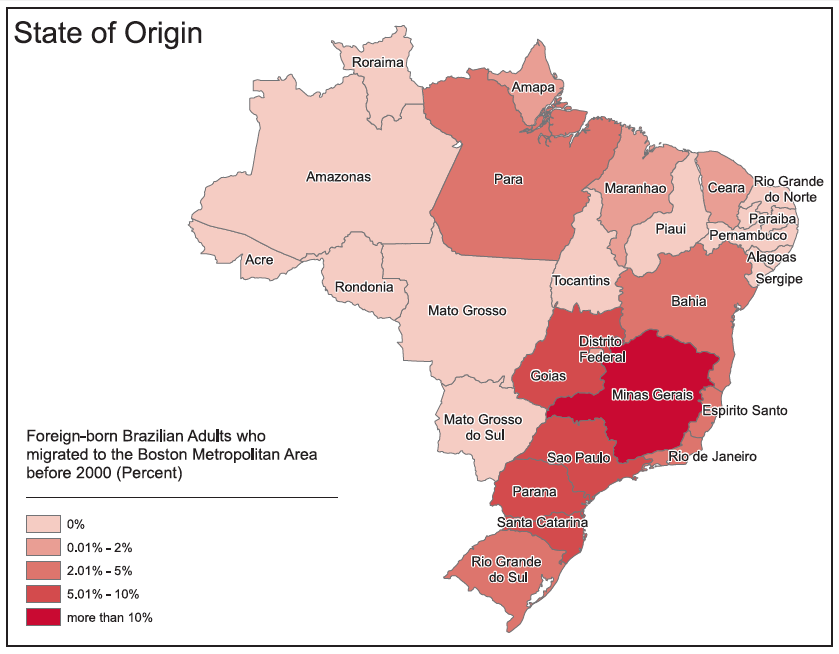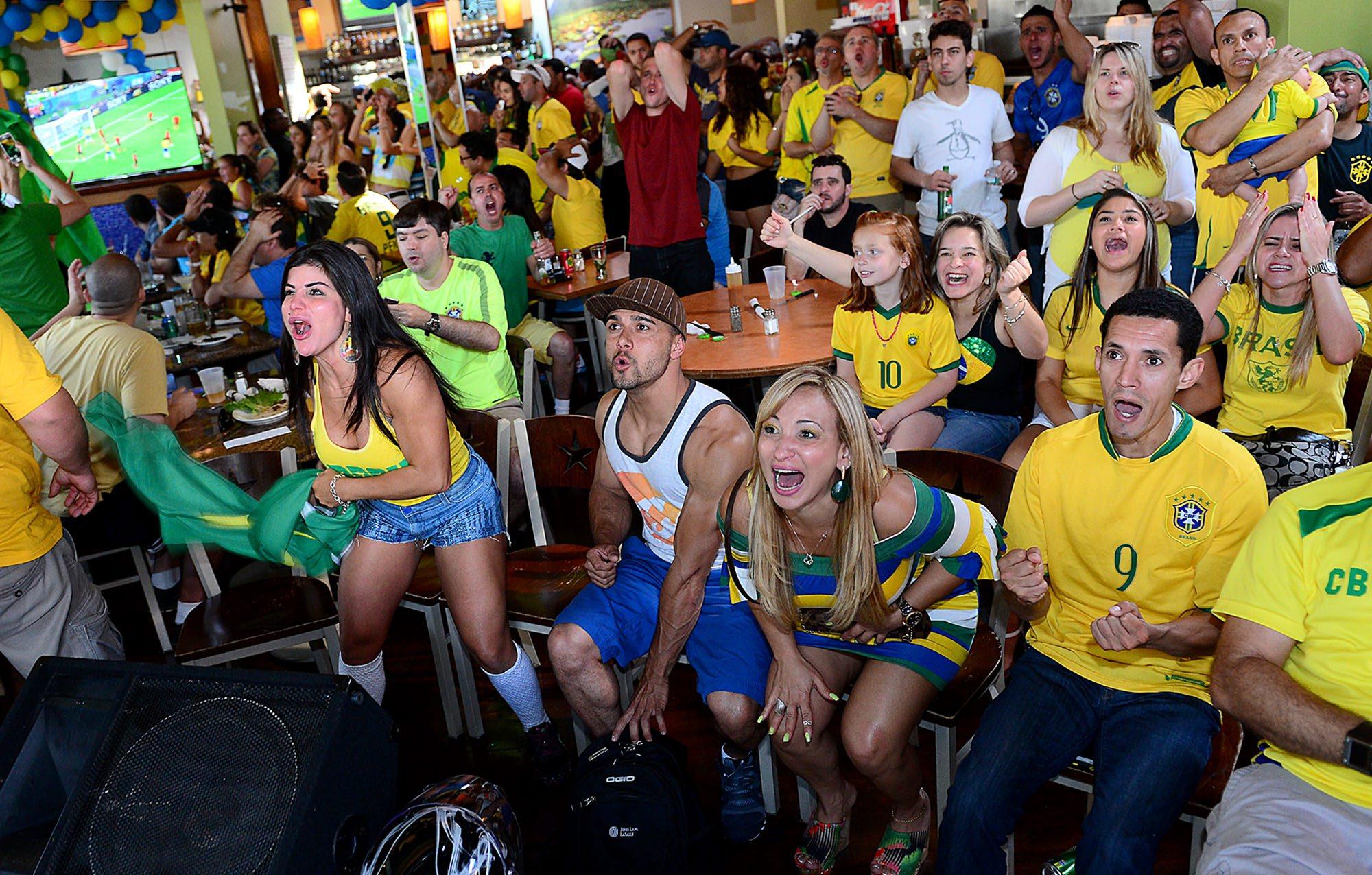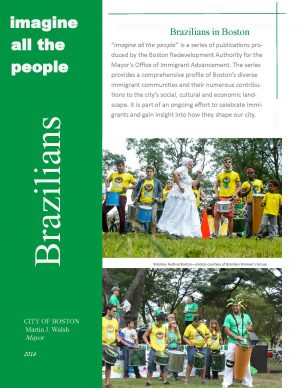Brazilian fans watching the World Cup at the Tropical Cafe in Framingham, June 2014. Courtesy of the Milford Daily News.
In recent years, greater Boston has attracted more Brazilian immigrants than any major metropolitan area in the country. Some of the earliest arrivals came in the 1960s and 1970s, laying the groundwork for large-scale migration that began in the mid-1980s. Brazilians have been drawn to Massachusetts in part because of its historic Portuguese-speaking communities that helped facilitate settlement.

From: Enrico Marcelli, et al., (In)Visible (Im)Migrants: The Health and Socioeconomic Integration of Brazilians in Metropolitan Boston, Center for Behavioral and Community Health Studies, San Diego State University, 2009.
Early migrants came mainly from the state of Minas Gerais and particularly the city of Governador Valadares. Connections between this area and Massachusetts date back to World War II when Boston engineers and technicians were posted to Minas Gerais to work on the mining of sheet mica used to insulate radio tubes and detonators. Contacts between the Bostonians and the residents of Minas Gerais resulted in cultural exchanges that encouraged some Brazilians to come to Boston to attend school or find work. Later, migrants came from adjoining parts of southern Brazil, including the states of Espírito Santo, São Paulo, Goiás, Paraná, and Santa Catarina.
The driving force fueling emigration in the 1980s was the collapse of the Brazilian economy due to rising international interest rates, growing debt, and an oil crisis. As Brazil repeatedly devalued its currency, massive inflation resulted. Hard-pressed Brazilians increasingly looked abroad for better paying jobs to help support their families. Many of those who came to greater Boston were from the middle class and had at least a high school education. But because of their relatively late arrival (many came too late to qualify for the amnesty program of 1986), a significant percentage was undocumented. During the Great Recession, many returned home as the Brazilian economy improved and used their savings to buy property or start small businesses. Nevertheless, greater Boston remains one of the top centers of Brazilian migration in the country.
Settlement
Brazilians have tended to settle in places where there were substantial Portuguese population, churches, and other community institutions. Initially, Somerville, Framingham, and the Allston-Brighton neighborhood of Boston hosted the largest communities. By the end of the twentieth century, Everett, Malden and Marlborough had also attracted sizeable communities. By 2010, Framingham’s Brazilian population had surpassed Boston’s, making this metrowest community one of the most Brazilian places in the US and an official sister city of Goverador Valadares. Many of the communities where Brazilians settled were older industrial centers where deindustrialization and outmigration had left vacant, relatively lower cost housing. As Brazilian immigrants bought homes and opened small businesses in the 1990s, the commercial areas were revitalized, as in downtown Framingham and Everett.
Work
Brazilians have been concentrated in construction and service fields but underrepresented among professional and managerial workers. In greater Boston, Brazilian men developed substantial self-employment niches in home construction and landscaping while women have been concentrated in house cleaning. For many educated, middle-class Brazilians, starting their own businesses was a means of combatting the downward mobility that some initially experienced because of their lack of English proficiency or US professional credentials. Family-owned businesses also helped support newly arrived family or friends or those without documentation. As their clientele grew, owners spun off new routes or sub-contracts to their countrymen and women, thus expanding the local Brazilian business sector.



